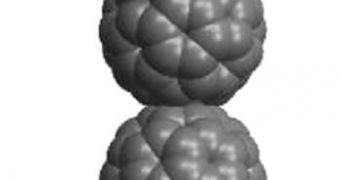In their quest for ever-smaller and ever-faster computer chips and transistors, scientists have, over the past few years, dedicated enormous amounts of time, energy, and money to producing electronics at the smallest scale possible. This has gone all well and good for some years, but now this field of research is approaching the maximum possible level of miniaturization. When the first transistors reached the nanoscale, the first quantum-mechanical phenomena began stirring up, hampering current flow, and decreasing the overall performances of the devices.
Experts are naturally looking for ways around this obstacle, but the problem is that their efforts seem to be going nowhere. That is why more and more researchers are advocating the necessity of creating a new approach to constructing electronics, one that would work from the bottom upwards. In other words, they are advising that more effort should be put into constructing transistors, for example, from the atomic and molecular level onwards, rather than shrinking existing technologies to this scale.
There is hope for technology still, some say, especially for the fields of nanotechnology, materials science, and electronics. In 1985, scientists discovered a molecule known as C60, which showed tremendously exciting chemical and physical properties, earning the research efforts of many groups around the world. For the first time ever, just recently, a group of European scientists has managed to investigate the electrical behavior of two football-shaped C60 molecules in contact with each other.
Each of the molecules was no more than 1 nanometer in diameter, but together they formed one of the first molecular circuits in the world. The team, featuring experts from Germany, France, Spain, and Denmark, used a scanning tunneling microscope (STM) to achieve this arrangement. In addition to being able to resolve individual atoms, the STM is able to manipulate them as well and to arrange them in simple structures. Details of the achievement are published in the latest issue of the prestigious scientific journal Physical Review Letters.

 14 DAY TRIAL //
14 DAY TRIAL //